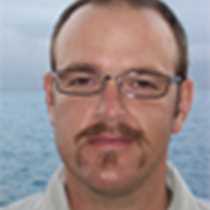Isabela Island
The bright orange of a sun welcomes us as we head toward Urbina Bay. The coastal area here was violently uplifted in 1954 prior to volcanic activity on Isabela Island. Various square kilometers of intertidal zone was thrust up, in certain cases more than 4 meters out of the ocean, trapping invertebrates and leaving various species high and dry. This morning is our opportunity to explore the geological and oceanic past of the uplift and the terrestrial present, with species that have arrived since 1954. We see massive coral heads that have had hundreds of years of build up by the coral polyps that have bleached bright white in the equatorial sun. Inland the large land iguanas appear to warm their exothermic bodies out in the open. We are surrounded by salt resistant vegetation with Galápagos mockingbirds and finches appearing on the top branches to sing. As we venture farther inland we come upon various Galápagos tortoises from the Alcedo volcano population. It is hard to believe that these small young tortoises can reach up to 400-500 lbs. in size. In the future, a hundred years from now they will still be walking their ancient migratory paths to the highlands of Isabela Island. They could be described as antediluvian creatures as we walk among them here on this relatively young island.
A short navigation brings us to Tagus Cove, which has been a protected cove for sailors for hundreds of years including the H.M.S. Beagle with Captain Fitzroy and the young Charles Darwin. Kayaking along the outer coast brings us close to flightless cormorants and Galápagos penguins with an occasional pacific green sea turtle coming up to the surface. Later in the afternoon part of our group makes a landing and starts to hike to the top of Tagus cove walking in Darwin’s footstep as he had visited this landing in 1835. As we gain altitude we expand our panoramic view as we look down at Darwin’s lake and the massive volcano’s that surround us. The occasional mockingbird and flycatcher flit by and the color of the sky changes as the sun starts to dip. As our hikers start to return we continue exploration with a Zodiac ride heading out into the Bolivar channel that separates Fernandina and Isabela Island. The stratification of the Tuff cinder formations is impressive showing the past explosive geological history. Galápagos Penguins and flightless cormorants continually come out of the water in the late afternoon as they finish their foraging runs and we spot a cormorant nest that contains two recently hatched chicks and a protective parent. Small fish are chased out of the water by larger Sierra mackerels and the coast lights up with a warm glow as the day ends and we return to our ship, content that life has shown its splendor to us today.




